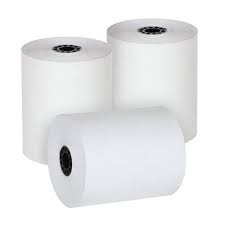Thermal Paper Everything Need to Know
Thermal paper is a kind of paper that has a unique surface coating on some papers. It makes it possible to print without using any ink. It works by heating the paper as it passes through the print head, which activates the chemical coating (dye or developer) and creates a high-definition image. In this blog, let’s explore the important things and need to understand.
Increasing demand from the printing sector, burgeoning application areas including automotive and electronic components, and rising emphasis on ecologically friendly products. Therefore, these factors surge the market growth. In addition, according to a research report by Astute Analytica, the Global Thermal Paper Market growing at a compound annual growth rate (CAGR) of 9.6% over the projection period from 2022 to 2030.
What is the purpose of thermal paper?
Thermal paper is typically utilized for thermal printing. ATMs and cash registers are the most typical applications, both of which have a tiny thermal printer that prints receipts as part of their design. It uses paper to print the receipts. Labels are printed on thermal paper, which is also utilized by cash registers and ATMs. The term “thermal labels” is frequently used to describe labels printed on paper. Because of the benefits thermal printing offers (such as high-quality printing, and low cost), printing labels on paper has become a popular choice.
Thermal paper characteristics
The thermal image’s starting temperature is indicated by static sensitivity. Low static sensitivity indicates that at high temperatures, the picture begins to form. Because of its high static sensitivity, thermal imaging can begin at low temperatures. Static sensitivity is a particularly important characteristic of this paper and is utilized in high-temperature environments.
Dynamic sensitivity displays the energy level and printing speed of thermal paper. In general, better quality is associated with increased dynamic sensitivity.
Factors to take into account when selecting thermal paper rolls
Durability of paper: Make sure the thermal paper rolls people select are robust and immune to smearing, heat exposure, and water damage. Important information is guaranteed to be preserved for the necessary amount of time by durable printing.
Print quality: Seek out thermal paper with good print quality, including dark, sharp prints that won’t fade over time. Professionalism and client satisfaction are increased by high-quality printouts.
Shelf life and storage: Analyse the shelf life and storage needs for the thermal paper rolls. To reduce waste and guarantee dependable printing when needed, make sure people have enough storage space to ensure the rolls have a lengthy shelf life.
The advantages of using thermal paper:
Lower Printing Prices: Thermal paper costs a lot less than other types of paper and printing techniques. Using standard paper results in higher costs for the paper as well as for the ink. In actuality, the cost of ink or toner replacement will eventually exceed that of the printer it self.
Low Costs of Maintenance: The fact that thermal paper requires quite no maintenance and doesn’t require regular replacement of pricey ink or toner is a significant benefit. The only upkeep required is a periodic wipe-down to maintain the printer head clean.
Original Source
https://astute37.wordpress.com/2023/08/30/thermal-paper-everything-need-to-know/

Comments
Post a Comment